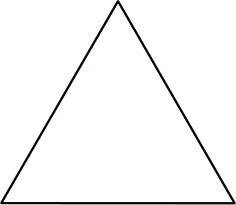Evolutionary Arms Race Produces Tall Trees
Look at a single tall tree standing proud in the middle of an open area. Why is it so tall? Not to be closer to the sun! That long trunk could be shortened until the crown of the tree was splayed out over the ground, with no loss in photons and huge savings in cost. So why go to all that expense of pushing the crown of the tree up towards the sky? The answer eludes us until we realize that the natural habitat of such a tree is a forest. Trees are tall to overtop rival trees - of the same and other species. Don't be misled when you see a tree in an open field or garden that has leafy branches all the way down to the ground. It has that well-rounded shape so beloved of sergeant instructors because it is in an open field or garden. * You are seeing it out of its natural habitat, which is a dense forest. The natural shape of a forest tree is tall and bare-trunked, with most of the branches and leaves near the top - in the canopy which bears the brunt of the photon rain. And now, here's an odd thought. If only all the trees in the forest could come to some agreement - like a trades union restrictive practice - to grow no higher than, say, 10 feet, every one would benefit. The entire community - the entire ecosystem - could gain from the savings in wood, and energy, which are consumed in building up those towering and costly trunks.
[...]
Individual trees are racing towards the sun, against their immediate neighbours in the forest. This race is particularly keen when an old tree dies and leaves a vacant slot in the canopy. The echoing crash of an old tree falling is the starting gun for a race, in real time (although a slower real time than we animals are accustomed to), between saplings that have been waiting for just such a chance. And the winner is likely to be an individual tree that is well equipped, by genes that prospered through ancestral arms races in evolutionary time, to grow fast and high.
The arms race between species of forest trees is a symmetrical race. Both sides are trying to achieve the same thing: a place in the canopy. The arms race between predators and prey is an asymmetric arms race: an arms race between weapons of attack and weapons of defence. The same is true of the arms race between parasites and hosts. And there are even, though it may seem surprising, arms races between males and females within a species, and between parents and offspring.
One thing about arms races that might worry enthusiasts for intelligent design is the heavy dose of futility that loads them down. If we are going to postulate a designer of the cheetah, he has evidently put every ounce of his designing expertise into the task of perfecting a superlative killer. One look at that magnificent running machine leaves us in no doubt. The cheetah, if we are going to talk design at all, is superbly designed for killing gazelles. But the very same designer has equally evidently strained every nerve to design a gazelle that is superbly equipped to escape from those very same cheetahs. For heaven's sake, whose side is the designer on? When you look at the cheetah's taut muscles and flexing backbone, you must conclude that the designer wants the cheetah to win the race. But when you look at the sprinting, jinking, dodging gazelle, you reach exactly the opposite conclusion. Does the designer's left hand not know what his right hand is doing? Is he a sadist, who enjoys the spectator sport and is forever upping the ante on both sides to increase the thrill of the chase? Did He who made the lamb make thee?
Notes:
As they compete for sunlight.
Folksonomies: evolution natural selection competition survival of the fittest
Taxonomies:
/home and garden (0.434764)
/society/unrest and war (0.430755)
/pets/birds (0.380145)
Keywords:
arms race (0.926712 (positive:0.002395)), arms races (0.824244 (positive:0.309511)), Arms Race Produces (0.811343 (positive:0.445801)), single tall tree (0.743457 (positive:0.815670)), asymmetric arms race (0.728550 (neutral:0.000000)), ancestral arms races (0.711187 (neutral:0.000000)), natural habitat (0.672927 (positive:0.612857)), old tree (0.642035 (negative:-0.487338)), open field (0.636585 (neutral:0.000000)), slower real time (0.628472 (negative:-0.515928)), magnificent running machine (0.613389 (positive:0.218720)), Tall Trees (0.558182 (positive:0.445801)), forest (0.536491 (positive:0.096223)), long trunk (0.513357 (neutral:0.000000)), forest tree (0.510780 (positive:0.559878)), rival trees (0.506708 (negative:-0.529333)), open area (0.505085 (positive:0.815670)), symmetrical race (0.500178 (positive:0.279726)), dense forest (0.498760 (positive:0.627867)), well-rounded shape (0.497003 (positive:0.770741)), individual tree (0.496275 (positive:0.372693)), costly trunks (0.495506 (neutral:0.000000)), restrictive practice (0.493411 (negative:-0.596574)), huge savings (0.492128 (neutral:0.000000)), Individual trees (0.489841 (neutral:0.000000)), photon rain (0.488551 (negative:-0.656934)), odd thought (0.487718 (negative:-0.547281)), sergeant instructors (0.487639 (positive:0.770741)), forest trees (0.486897 (positive:0.279726)), opposite conclusion (0.486028 (neutral:0.000000))
Entities:
cheetah:Person (0.873736 (positive:0.499570)), real time:FieldTerminology (0.611760 (negative:-0.515928)), 10 feet:Quantity (0.611760 (neutral:0.000000))
Concepts:
Forest (0.986087): dbpedia | freebase | opencyc
Evolutionary arms race (0.791381): dbpedia | freebase
Race (0.778615): dbpedia | opencyc
Arms race (0.696574): dbpedia | freebase
Cheetah (0.682311): dbpedia | freebase | opencyc
Trunk (0.647882): dbpedia | freebase | opencyc
Tree (0.640547): dbpedia | freebase | opencyc
Branch (0.597968): dbpedia | freebase | opencyc





